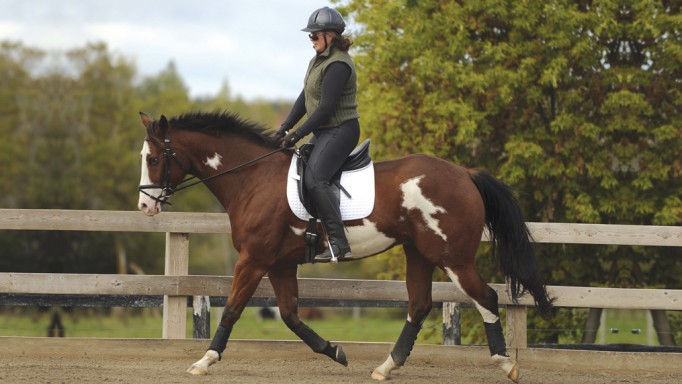While his flatwork routine is tailored specifically for each mount’s individual needs and level of development, he suggests getting the most out of your ride by keeping it simple and focusing on the basics.
“George Morris told me 40 years ago that when you first get on a horse, whether it’s dead green or made, the goal is to get it in front of your leg, going up into your hand, and going straight. My thinking has not changed since then in the importance of these basics. It is not as simple as it sounds to achieve, but once you can master those very important first steps, you can move on to other things.
Another aspect of flatwork that remains just as important after all these years was taught to me by de Nemethy, and that is “inside leg into outside hand.” This is a theory that comes into play whether you are going straight or turning, and only after you have achieved a horse that is moving forward off the leg into your hand and travelling straight. Whenever I’m having any trouble with my horses on the flat, I simplify and back it up to the beginning. Is the horse between my inside leg and outside hand? Is it going forward? Is it straight?
It’s also very important to make sure the horse is always working on two tracks – meaning the right front and right hind are in line, and the left front and left hind are in line. Unless you’re wanting them to come off the two tracks in a half-pass or leg yield, always work on two tracks. Pay attention and you can actually feel those two tracks.
Once you have these basics – and these are not easy basics – under control in your mind (because that’s when you are able to correctly pass the knowledge on to your horse), only then should you add to the flatwork. Add extensions, collections, inside bend, outside bend, and no bend in your turns. Remember in the bending exercises to use both hand and leg – hands gently bending the neck, and legs bending the body.
A show jumping horse will also need to have a good gallop, because that’s what the sport is; we don’t trot jumps! The walk and trot are of course very important, but when you are working at the canter and gallop it is essential to work on adjustability – extensions and collections. Also work on different-sized turns, making both sharp and wide turns. The horse’s ability to turn while keeping the basics of flatwork will determine at what level it will ultimately be competing.
These basic skills are a part of my daily rides. If you are working your horse with these basics in mind, you’re always heading in the right direction; and when things aren’t going well, back it up and re-establish those basics. The foundations of flatwork should be present in your mind, always.”

